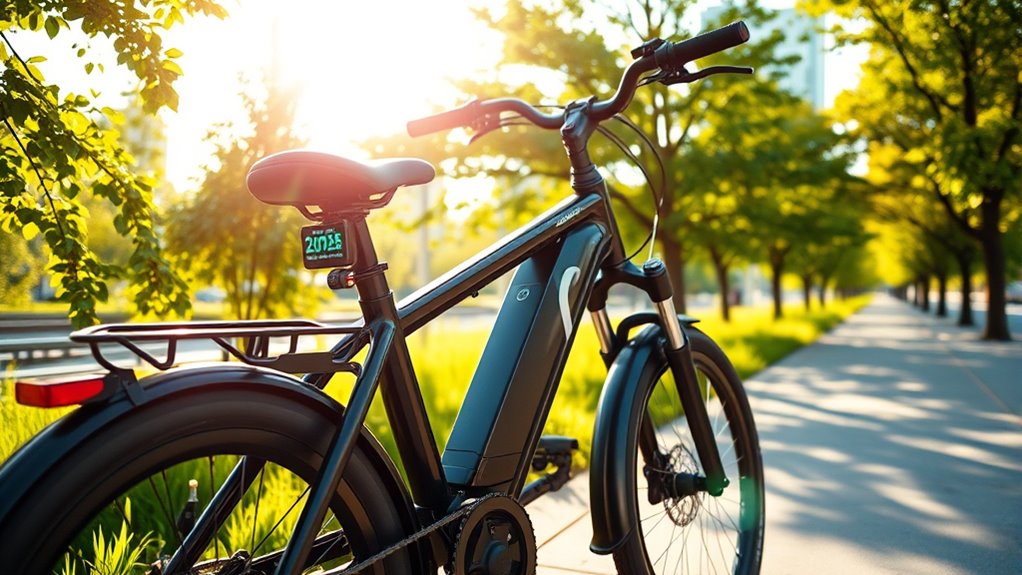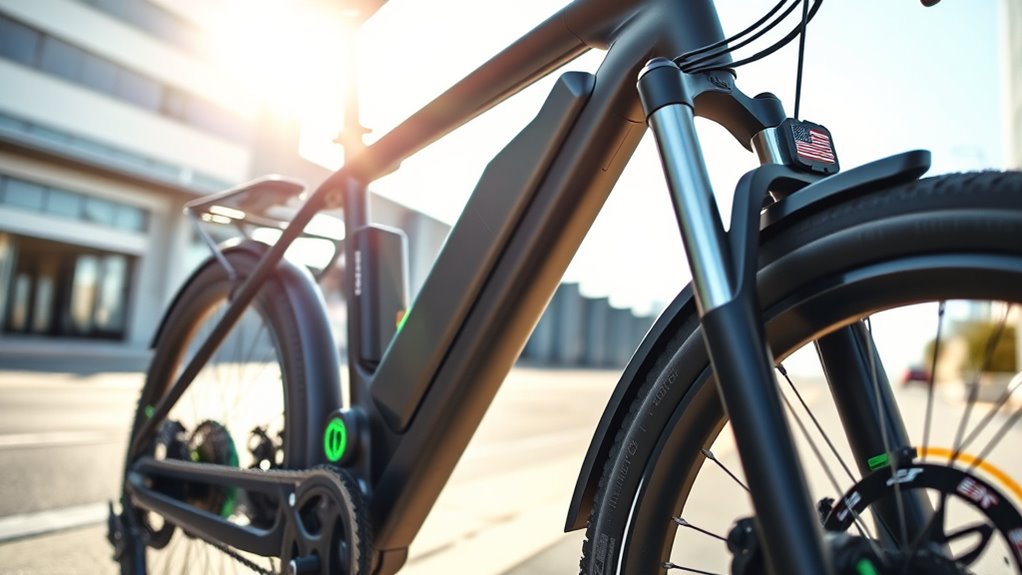The 2025 US electric bike tax credit helps you save money when buying an e-bike by offering a financial incentive that reduces your tax bill. To qualify, your bike must meet safety standards, especially for the battery, ensuring safe operation. You’ll need proof of purchase and proper documentation to claim the credit when filing taxes. This program aims to make eco-friendly transportation more accessible and encourages you to choose safer, qualifying models—plus, there’s more to explore if you keep going.
Key Takeaways
- The 2025 US electric bike tax credit offers a financial reduction when purchasing qualifying e-bikes that meet safety standards.
- Buyers must provide proof of purchase and safety compliance documentation to claim the credit on their tax returns.
- The credit directly decreases your tax liability, making electric bikes more affordable and encouraging eco-friendly transportation.
- Only certain models meeting battery safety standards and other criteria qualify for the full or partial tax credit.
- The program aims to promote sustainable commuting, reduce emissions, and support broader environmental and urban mobility goals.

Are you wondering how the 2025 US Electric Bike Tax Credit can help you save money? If you’re contemplating purchasing an electric bike, this incentive could make a significant difference in your budget. The government aims to promote eco-friendly transportation, and offering tax credits is one of its strategies. When you buy an electric bike that qualifies, you can reduce your tax bill, making the switch to greener transportation more affordable. Understanding how this works helps you plan your purchase wisely and maximize your savings.
Save money on eco-friendly transportation with the 2025 US Electric Bike Tax Credit.
One critical aspect to consider is the safety of the battery used in your new electric bike. The government’s incentives often come with specific standards for battery safety, ensuring that manufacturers meet strict criteria to prevent potential hazards like overheating or fires. This focus on battery safety means you’re not only getting an eco-friendly vehicle but also one designed with your safety in mind. When selecting an electric bike, check if it complies with safety standards, as bikes that meet these criteria are more likely to qualify for the tax credit. This emphasis on safety isn’t just about avoiding accidents; it also helps you avoid additional costs related to repairs or replacements caused by substandard batteries.
The process for claiming the tax credit involves providing proof of purchase and ensuring the bike meets the program’s requirements. The government’s incentives are designed to be straightforward, but it’s essential to keep all receipts and documentation. When you file your taxes, you can claim the credit, which directly reduces your tax liability. This means that if you owe $2,000 in taxes and qualify for a $1,000 credit, your tax bill drops to $1,000. The incentives are often structured to encourage more consumers to switch to electric bikes, making sustainable transportation accessible to a broader audience. Additionally, understanding the types of electric bikes available can help you choose the most suitable model for your needs and budget.
Finally, it’s worth noting that the incentives are part of a broader effort to reduce carbon emissions and promote cleaner urban environments. By taking advantage of the tax credit, you’re not only saving money but also contributing to a healthier planet. The government’s focus on incentives aims to remove barriers to adoption, making electric bikes a more attractive option for daily commuting. So, when you plan your purchase, consider how the tax credit, combined with the safety standards and your commitment to sustainability, makes buying an electric bike a smart, responsible choice.
Frequently Asked Questions
Can I Combine This Credit With Other Incentives?
You can often combine the electric bike tax credit with other incentives, but federal eligibility rules and state variations matter. Check if your state offers additional rebates or credits, as some do. Be sure to review the specific requirements for each program, as they might have different eligibility criteria. Combining credits can maximize your savings, so research both federal and local programs to get the most benefit.
Are Used Electric Bikes Eligible for the Tax Credit?
Used electric bikes can be eligible for the tax credit, but it’s not guaranteed. You’ll need to check if they meet specific criteria, like having a qualifying battery warranty and low maintenance costs, which guarantee you’re not just throwing money into a black hole. The bike’s age and condition matter, so do your homework to verify if your used e-bike qualifies for this incredible savings opportunity.
What Documentation Is Required to Claim the Credit?
To claim the tax credit, you’ll need to keep documentation showing your electric bike purchase, including receipts that detail the bike, accessories, and any bike maintenance costs. Save proof of the purchase date, the seller’s information, and details of any electric bike accessories included. This documentation helps verify your eligible expenses, ensuring you can confidently claim the credit when filing your taxes.
Does the Credit Apply to Commercial Electric Bike Purchases?
Think of applying for the credit like checking if your shop’s open for business; yes, the credit does cover commercial electric bike purchases. You need to meet business eligibility criteria and consider regional applicability, as some incentives vary by location. If your business qualifies and your region supports it, you can claim the credit for electric bikes used in your operations, making eco-friendly transportation more affordable.
Are There Specific Brand or Model Restrictions for Eligibility?
You might wonder if there are brand restrictions or model restrictions for the tax credit. Generally, the IRS doesn’t specify particular brands or models that qualify, but eligibility depends on meeting certain criteria like price and energy efficiency. To guarantee your electric bike qualifies, check if it meets the standards set by the program and confirm that it isn’t excluded due to specific restrictions. Always review the latest guidelines for updates.
Conclusion
With the 2025 US electric bike tax credit, you could save up to 30% on your e-bike purchase, making eco-friendly commuting more affordable. Did you know that electric bikes can reduce greenhouse gas emissions by up to 90% compared to cars? By taking advantage of this credit, you’re not only saving money but also contributing to a cleaner environment. Don’t miss out—this is your chance to ride greener and save big!









